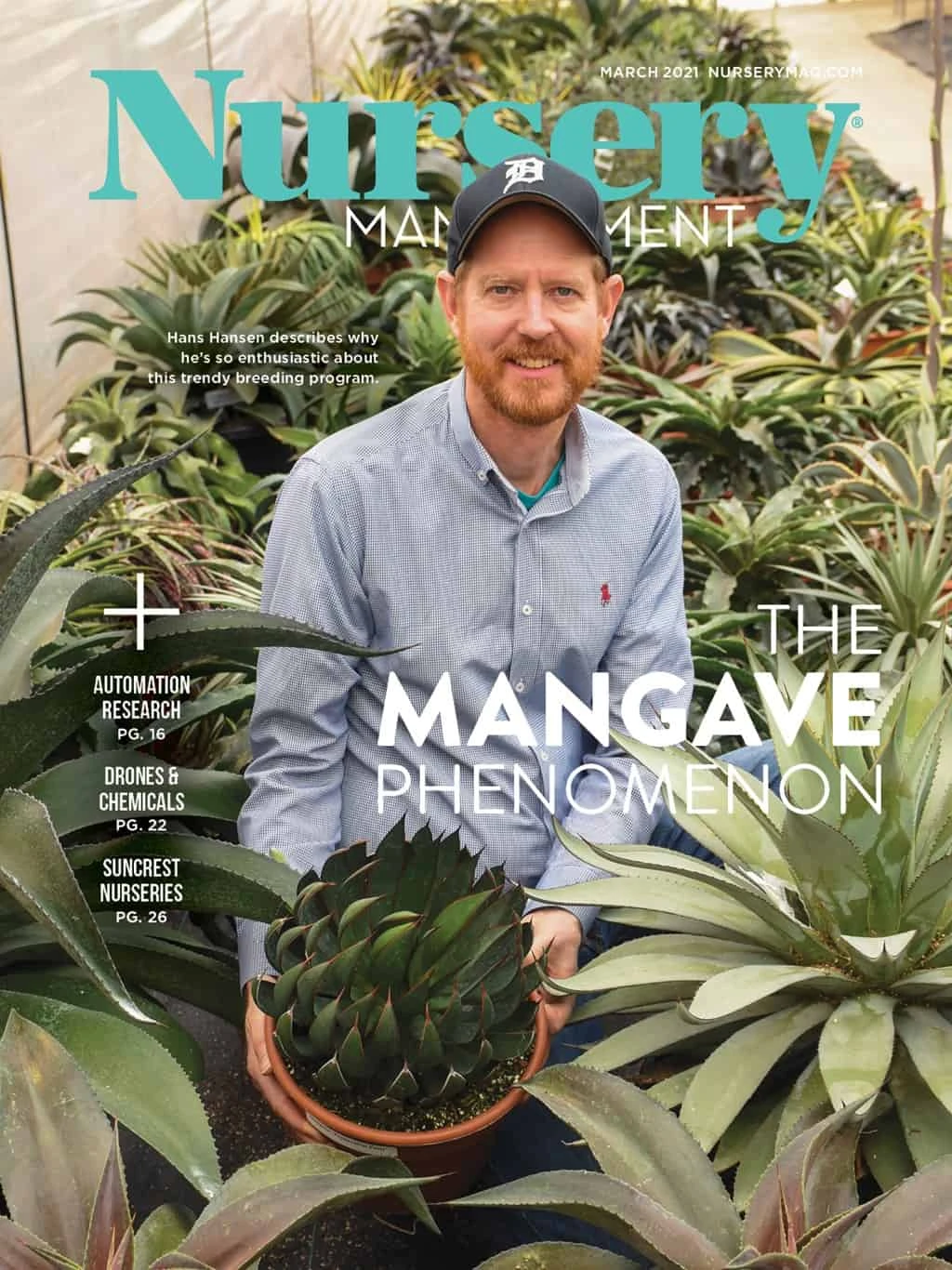

The secret to cultivating native plants that are resilient to the effects of climate change may lie in a seed’s adaptability to its regional provenance.
Pati Vitt, manager of restoration ecology at the Lake County Forest Preserve District in Libertyville, Illinois, is leading a concentrated initiative to determine if adaptability strategies using source-identified seeds from more southern and distant regions are as, or more, successful than standard sourcing practices.
“Growing plants from native seeds that adapt to change across typical provenance boundaries can foster resilience,” she says. “Research is necessary to learn how we can better preserve plant vitality and protect native ecosystems as climates change.”
Findings from Vitt’s work will present timely opportunities for native plant growers specializing in commercial applications, as well as plant breeders, seed producers, restoration specialists and conservation ecologists.
“Outcomes will inform native plant growers’ best-practices and provide fresh marketplace opportunities for retailers and consumers,” Vitt says. “Key findings will also inform habitat, prairie and ecosystem restoration techniques and may have implications for other natural and planted areas.”
Across the country and around the globe, climate change is influencing the health of native plants, impacting the resiliency of natural habitats and bringing uncharted technical challenges to land and habitat restoration initiatives.
“With warmer winters and more drought-prone summers, these changes have been gradual over the last 100 years and will greatly affect the next 100,” Vitt says. “We need to understand when and how we need to update our ecological management practices to ensure plants remain healthy and resilient.”
At the heart of this project are 180 acres of retired Illinois farmland where, late last fall, a massive 800 pounds of native grass seeds from Kentucky and southern Illinois were planted. The outdoor nursery is located within Grant Woods Forest Preserve, about an hour northwest of Chicago in Ingleside, Illinois. The large-scale planting followed more than a year of planning and preparation that included hands-on site restoration and months of sourcing enough bulk native seed necessary to cover the acreage.
Support for the project is provided by the Preservation Foundation of the Lake County Forest Preserves, a private donor and the Wildlife Conservation Society Climate Adaptation Fund. Follow @LCFPD on social media or visit lcfpd.org/conservation/projects/ to track the project’s progress.
Brush removal and cover crop plantings, followed by installation of native grass seed, were completed first, along with restoring the hydrological integrity of the agricultural land by disabling area drainage tiles. Native grass seed now covers the former agricultural land, with one third of the acreage planted in locally sourced seed, and two-thirds planted in seed sourced from as far south as Kentucky.
“One very challenging issue for conservation organizations throughout the region, as well as restoration ecologists and others within the industry, is how we source seeds for restoration activities,” Vitt says.

Growing through change
The issue of bulk seed sourcing for ecological conservation and climate change preparedness drew 124 participants from across the Midwest and the broader United States, as well as Argentina, Australia, Canada and Germany, to a virtual workshop presented by the District this past September.
Notable speakers included Julie Etterson, professor at the Institute on the Environment at the University of Minnesota, Duluth, and principal scientist at Project Baseline, as well as Anna Bucharova, assistant professor in the Biodiversity and Ecosystem Research Group, Institute of Landscape Ecology, Münster and Jennifer Ogle, coordinator of the Arkansas Native Seed Program and collections manager at the University of Arkansas Herbarium. The workshop, “Growing Through Change: Sourcing Climate-Resilient Seed for Ecological Restoration” is available to view on YouTube at https://bit.ly/38j1q33.
A pre-workshop survey gathered an overview of participants’ seed sourcing strategies.
“By far, they noted that most of their on-the-ground restoration projects were in natural areas, especially in forest preserve or conservation districts, state and regional park systems, and private conservation land trusts,” Vitt says. “The scale of restoration projects varied from one acre to more than 100 acres, with an average size of 33 acres.”
Most organizations use more than one source in their restoration projects (67%) and tend to use more than one vendor or producer to source seeds for a single project (72% sourced from between one and three producers). While most organizations don’t engage in a formal competitive bid process (63%), they do have formal guidelines or policies that direct their sourcing strategies (66%).
“But by and large, participants’ sourcing guidelines for bulk seed do not currently consider climate resilience explicitly. Only 33% of respondents said their guidelines do consider it,” Vitt says. “I think our workshop was successful in that we raised awareness among industry influencers who can help bring about change.”
Spring forward
With a promising spring production season on the horizon, Vitt and her colleagues will continue to monitor their site closely, as they’ve done throughout the winter.
“We have 60 permanent monitoring plots in place for data collection,” Vitt says. “This will ensure that we have the best evidence possible for how plants from different sources of commercially grown seed will fare now and over the upcoming decades.”

Explore the March 2021 Issue
Check out more from this issue and find your next story to read.
Latest from Nursery Management
- The Growth Industry Episode 3: Across the Pond with Neville Stein
- Trends: Proven Winners 2025 perennial survey shows strong demand
- Online registration opens for the 2025 Farwest Show
- Sustainabloom launches Wholesale Nickel Program to support floriculture sustainability
- Plant breeding as an art
- Society of American Florists accepting entries for 2025 Marketer of the Year Contest
- American Horticultural Society welcomes five new board members
- Get to know Christopher Brown Jr. of Lancaster Farms







